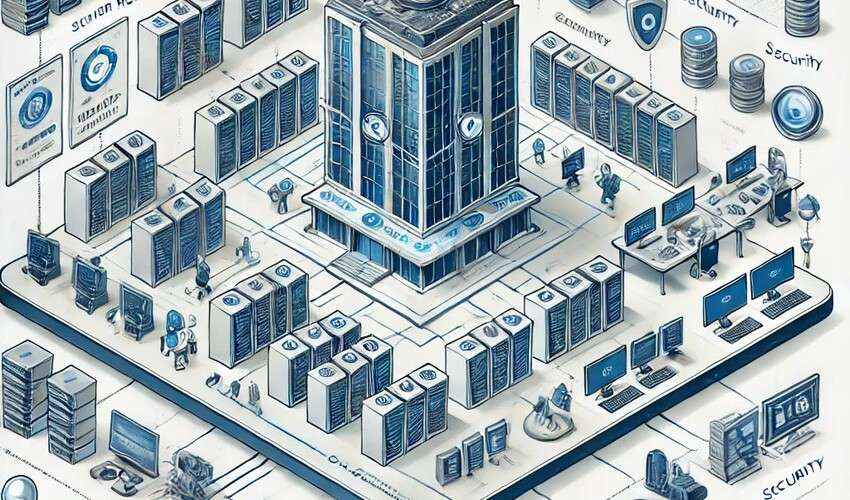
In the contemporary environment that is characterized by technological advancements and heightened levels of competition, organizations are always in search of ways and means of minimizing costs so that they can operate optimally. One of the most common solutions many firms opt for is on-premises software. But what exactly is on-premises software, and how can it benefit your business exactly? This article is a complete one-stop-shop where all the information about On-Premise Software will be provided, starting with the meaning of the term and going to the various benefits and drawbacks.
What is On-Premises Software?
On-premises software is also called on-premise software or on-prem, and it is software solutions installed in a firm’s enclosed server and ICT system. This implies that the software resides on the organization’s physical infrastructure and not in a remote host, such as a cloud.
Understanding the Working of On-Premises Software
This software hosts and computes data within the organization’s facilities. This allows different firms to fully control their data and security, especially whenever they want to redesign the software.
Benefits of On-Premises Software
Increased Data Security: Compared to SaaS, on-premise solutions allow organizations to control their data. This means that it does not have to be served and hosted outside the company’s internal network, which can make the company’s data vulnerable to hacking.
Customization: It can be adapted to fit the needs of a specific business, which in turn helps increase the effectiveness of business processes.
Control: Businesses have full control over the software and are solely responsible for its modification and upgrade. They can omit outside service suppliers.
Compliance: Thus, implementing on-premise software enables companies to meet legal demands by properly storing and processing data to meet legal standards.
Drawbacks of On-Premises Software
Higher Costs: Compared to SaaS, on-premises software demands a larger initial setup on servers, infrastructure, and human resources, which can be very expensive for companies, especially small businesses.
Maintenance and Updates: Companies must keep the software updated, and updating it can take quite a while and demand a lot of resources.
Scalability: It may require more scalability than cloud-based ones, while the flexibility of cloud solutions could be more demanding when changing business needs.
Limited Accessibility: In on-premises software, employees must be at the office to access the software, which can be inconvenient, particularly if they work mostly from home.
Is On-Premises Software Appropriate for Your Company?
Choosing on-premises software will depend on your organization’s need, acquisition and implementation capacity, and general business objectives. On the other hand, businesses can have more control and security with on-premises software; however, some of them could have cheaper or more efficient solutions.
Effective Implementation of On-Premise Software in Your Business Organisation
On-premises software deployment must be done following a proper approach to avoid disruptions and achieve the highest realization of returns for the business. Follow these Phases to achieve a successful implementation:
Phase of Implementation
Follow these steps to achieve a successful implementation:
Planning Phase
Determining the requirements and goals
- It is a fundamental step in determining the requirements and goals of the target audience based on an assessment of their needs.
- Some of the business needs the vendor claims the on-premises software will meet should be noted.
- Specify the scope of work that is required to be done to implement the project.
Budgeting and Resource Allocation
- It is critical to quantify the probable cost of licensing, hardware, implementation, support services, and annual maintenance charges.
- Devise the type of human resources, technical and other facilities, and equipment required for implementation.
Pre-Implementation Phase
Software Evaluation and Selection
- On the contrary, on-premises software means purchasing and deploying the software on the enterprise’s premises, for which one must research and evaluate the available solutions depending on needs.
- Trying to select a good software vendor that can meet your organization’s requirements as well as financial capabilities.
Customization and Configuration
- Discuss with the vendor today to ensure that the software reflects your organization’s workflow and procedures.
- Set up the software to meet the business’s needs and security standards.
Implementation Phase
Pilot Testing
- Create a pilot version of the software that will be launched for some users to help identify problems with it before the larger public is exposed to it.
- It has been noted that feedback from the pilot users is needed to make any necessary changes.
Data Migration
- The new on-premises software Evaluation and Continuous Improvement
- effectively integrates data migrated from the current system.
- Respect the data and its proliferation during the transition process to a new set of tools.
Training and Change Management
- Train the employees on using the new software properly to ensure the organization takes full advantage of it.
- It is necessary to employ various measures that can help manage change and avoid resistance to it.
Post-Implementation Phase
Monitoring and Optimization
- Oversee the usage of the on-premises software after it has been implemented.
- Fine-tune various ports based on existing feedback and performance.
Support and Maintenance
- Set up a help center to help handle user questions and concerns about the tool.
- Perform routine check-ups and new version releases to enhance the security and efficiency of the software.
Evaluation and Continuous Improvement
- Assess the level of effectiveness of the implementation according to the previously set goals and objectives.
- Sustain designed change to improve the software’s support measures and make it more flexible and easy to use.
Installing on-premises software can be intricate, but by adopting the procedure mentioned, the process can be made easy and efficient according to organizational requirements.
Conclusion
Therefore, on-premises software can be a suitable solution for companies with the strongest control over organizational data and processes. This means that before you decide about on-premises software, you have to compare all the advantages and disadvantages to make the right decision.
